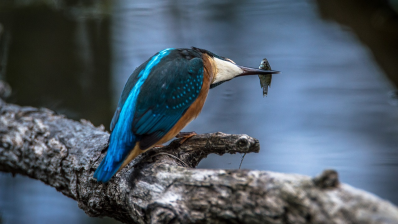Headings and subheadings: kingfisher
The Grammar Bit!
Find out more about the common kingfisher by reading the information text opposite. You’ll notice that it includes a main heading (underlined) to help the reader understand what the whole text is about.
You’ll notice that it also contains several subheadings (bold). Subheadings break up the text into interesting chunks or paragraphs of information for the reader to enjoy and learn from. If the reader is looking for a specific piece of information, a sub-heading can act as a quick guide.
Once you have read the whole text, with your talk partner, give the heading and each subheading a star rating.
1 star = OK
2 stars = good
3 stars = excellent
Be prepared to explain your star ratings!
(Teacher’s note: Capitalisation in headings and subheadings can take various forms. The key at this level is to encourage consistency.)
Scintillating Sentences
The Common Kingfisher
A common kingfisher’s diet
The common kingfisher is a riverside predator that hunts for its food. It needs to eat its own body weight in fish and aquatic creatures every day. It mostly feeds on minnows and sticklebacks, but will also eat insects and tadpoles.
How to spot a common kingfisher
Common kingfishers are quite hard to spot as they are shy birds who fly very quickly! These magnificent birds are mostly identified by their distinctive bright-blue feathers and orange breast. They are also quite rounded bird with short legs and small, rounded wings. They have a long, dagger-like beak.
A common kingfisher’s home
Unlike most other birds, common kingfishers do not make a nest in a tree. Instead, they burrow into a riverbank. Finding a suitable place on a high riverbank, a common kingfisher will make a short tunnel about half a metre from the top of the bank and about 60 cm into the bank. At the end of the tunnel, there is a slight dip to keep their eggs safe.

Did you know?
Like all species of kingfisher(there are 114 in total!), the common kingfisher is very territorial. If another kingfisher enters its stretch of river, fights may occur. This often involves one bird grabbing the other’s beak, whilst trying to hold it underwater.

 Sign in
Sign in

